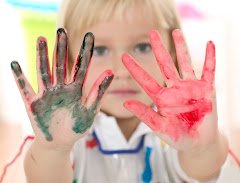How to Heal a Broken Wing is a new book by Bob Graham. It is the simple story of a boy noticing and then caring for an injured bird. The words are few and the author uses the pictures to tell the story. He makes us stay a little longer on each page as we look from picture to picture to see the what is happening. In our busy world, full of worries about germs, I'm not sure people actually help injured birds anymore. It is for that and other reasons, I think this book is very important. The book helps the us all slow down and absorb the message of compassion. We need to take time to be sure this message is heard because young children are certainly bombarded with other messages. Children as young as 4 and 5 are playing video games filled with violence. Just the other day, a boy was proudly telling me that he "shot my mom's legs off and then I shot her in the head." Reading this book won't turn the world around, but for just a moment, it will at least give our students another perspective..
You may not be able to follow up in the classroom setting by caring for an injured bird, but there are many other ways to help children develop caring and compassion.
Take photos of children in your classroom being kind and caring. Photos are a powerful way to visually remind children of the behaviors we want to reinforce.
Sing songs or say a poem or pledge about caring. Music cares a message that stays with us for many years.
Create a kindness tree or wall and when someone does something especially kind post it. I've even had parents help with this by sending in things that happened at home. I know some experts say that the specific child should not be recognized only the action, but I can see benefits of either way. Just make sure everyone gets recognized!
Plan a project to help others or the environment. Collect pennies for a cause and then purchase and give the items to the person or organization. Write letters to someone who is sick. Plant flowers or a tree at the local library or playground. My friend started a garden at her school. She told me how amazing it was to watch them learn to care for the things they had planted and make sure others did not walk on or destroy the plants.
Have a kindness helper. This may sound silly to you, but I did this for years in my classroom and it was one of the most popular jobs. The kindness person was to watch for kind acts and then at the appointed time, he or she would come to the front of the group and tell us about the kindness he or she saw. We used a play microphone to make the time more special. I think we also used a badge or a special hat too. Others were also invited to also tell of kind acts. Then before the kindness person sat down, he or she had to pull a question from the special box and tell us what we should do. The questions revolved around what to do if someone fell and was hurt, if someone had a toy you wanted, how to help someone with and problem and so on. We cheered loudly for the answer and continued the discussion about the topic as long as I thought was appropriate.
I encourage you to share your ideas about how to spread an attitude of caring and compassion in the comment section.

Subscribe to:
Post Comments (Atom)


No comments:
Post a Comment